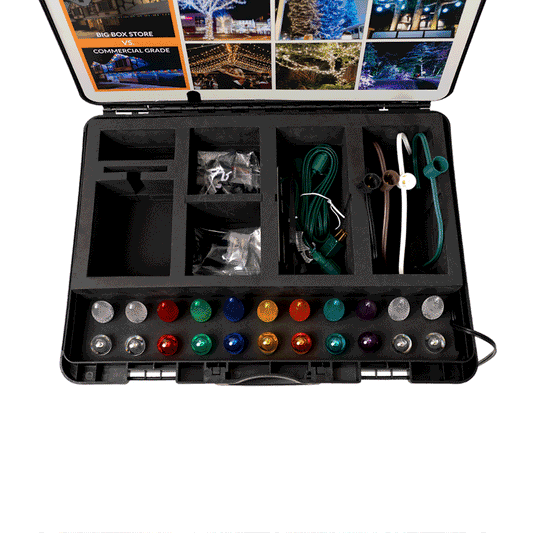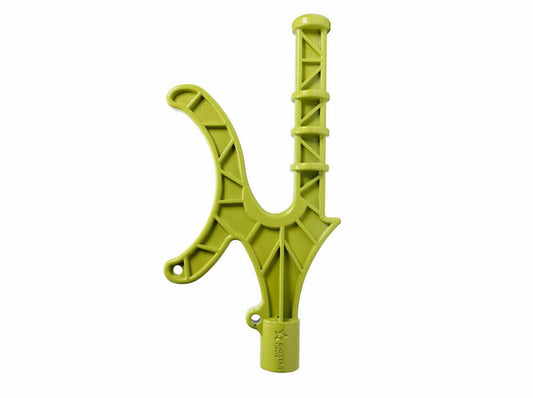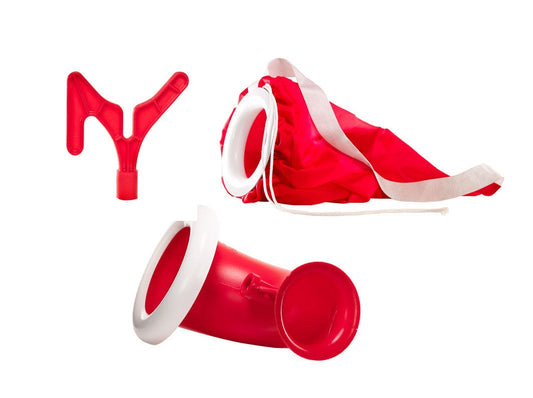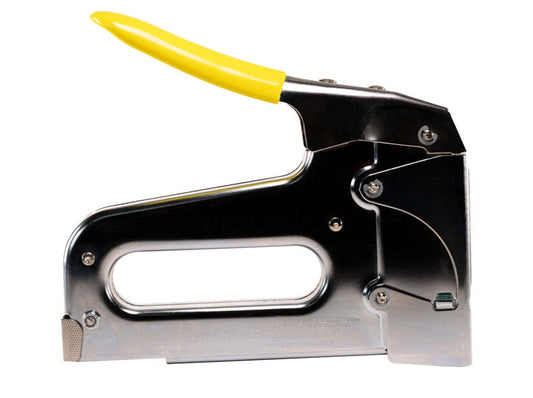The Christmas light installation business is the “happiest” repeatable house care service you can offer. I started mine in 2009 as a side-hustle between seasons at my other job flying seaplanes in the Canadian bush. After crossing the country in my Volkswagen Jetta back to my hometown of Vancouver, Canada, I simply strapped on the ladder racks, printed a few door hangers, and started canvasing affluent neighbourhoods. The response was overwhelmingly positive and I loved the work compared to some of the “dirtier” jobs I’d held in the past. Installing Christmas Lights has an element of creativity; it literally brightens peoples’ holidays, and it makes homeowners’ lives safer by taking care of the ladder work for them. The marketing opportunities are plentiful and photogenic. You will also catch people at their busiest time of year when they place a high perceived value on home services because they don't have time for it themselves.
If you already offer another home service such as pressure-washing, painting, or landscaping, you are miles ahead already because you’ll be able to tap into your existing customer base. Furthermore, bolting on a Christmas light service will attract a new pool of customers who will go on to hire you for your other services during the rest of the year. Therefore, offering Christmas light installation can have great short and long-term returns on investment.
Christmas light installation as a business doesn’t come without its challenges. In the early years, we lost a lot of money on faulty products, not to mention the resulting extra labour and headache of keeping customers happy while getting call after call for maintenance. Managing a business where everyone wants you at the exact same time of year can also be stressful. We have since developed multiple strategies to mitigate these issues, and have put together our top 10.
This guide is intended to help you avoid the most common pitfalls of launching a Christmas installation service. The industry is still in its infancy and home owners are just beginning to realize that they can hire professionals to install their lights. The more people that can succeed in offering this service both safely and professionally, the more the industry will grow. And the more the industry grows, the more significant innovations we will see over the next several years. So, here is part one of our top 10 "musts" for starting your Christmas light installation business:
1. Find a reputable supplier
There’s nothing worse than putting up bad lights that don’t make it through to Christmas, or fail before hanging them again next season. Big box stores are notorious for poor quality lights with seemingly “planned obsolescence” built into them and terrible warranty policies. The two largest factors that will contribute toward your success are:
- Exemplary service
- High quality commercial-grade Christmas lights that are built to last
This will keep maintenance calls to a minimum so you can focus on installing lights rather than re-installing replacements. Plus, you're offering a superior product that many customers are not likely to find on their own. Not all products are created equal. For example, many companies use wire that is 92% pure copper versus 99.99%, string lights with poor-quality resistors, and bulbs, clips, and many other products made of low-grade plastics. While you can’t see these differences immediately, it will be abundantly evident within one or two years. For example, warm white LEDs will turn yellow and pure white LEDs will turn blue with age. When the client asks to add more lights to their display (perhaps a tree has grown) you won’t be able to match the lights exactly because they’ve aged too quickly. Therefore, product quality and LED stability are key to long-term growth of your business.
A good supplier goes beyond just selling good products. They need a team of experienced support people who you can call upon to answer questions or troubleshoot by either chat, phone, or video call. It’s comforting knowing that if you are on a jobsite, that you can fix the situation with a 20 second video call versus spending long precious minutes figuring it out on your own. There are enough unknowns when starting a new venture and products don't need to be one of them.
In the first few years of your Christmas lights service, a significant portion of your revenue will come from selling new products. This can represent 40-60% depending on your pricing structure. So take the time to do your research, ask questions, and collect samples to compare. Make sure you are comparing “apples to apples”. For example, is shipping included in the pricing? What are the preseason order programs like for increasing your margins and how will the payment terms fit with your cash flow? What are their reviews like? Do they have references they are able to share?
2. Get a Sample Kit

Assuming you’ve landed on a reputable supplier, it’s time to develop a sales pitch for your customers. Couple that pitch with a sample kit where they can physically see and touch the lights. This will set you apart from the competition who might still be using inferior lights from retail stores. It’s also a great opportunity to show them colour options and agree on a design. You can buy a sample kit or create your own that works for you in order to show off the core products you love.
3. Build an Album of Marketing Photos
The expression “a picture is worth a thousand words” holds true in the Christmas light industry. You can ask people to imagine while pointing at rooflines and trees, but what will win your customers are professional photos of similar trees or rooflines that show the lights in all their glory.
How will you assemble a gallery if you are just starting out? Ask your supplier. They have a vested interest in selling their lights and should gladly offer up a starter package of professional photos showing the most common uses of their lights. Once you’ve done several jobs that you are proud of, hire a photographer with experience in difficult lighting situations. LED’s are notoriously tricky to shoot. Slowly add to your arsenal of photos each year and soon you’ll be able to market every conceivable use and lighting option available.
4. Gather the Right Tools

Christmas light installation requires surprisingly few tools to get the job done safely and effectively, but you need good ones:
-
Set of aluminum ladders with stand-off arms and levellers:
Only get the best quality ones you can find. Your employees’ safety depends on this equipment, but you also need to train them on how to use it properly. Orchard (or tripod) ladders are notorious for misuse and subsequent falls. We strongly suggest using the Hasegawa brand orchard ladders. -
Collapsable painting pole (approx. 16’ - 20’ when fulling extended)
There are two tools you can attach at the end of the pole with the acme thread:
a) a purpose built Christmas light hanging hook
b) a Christmas light feeder, which makes canopy wraps a breeze. -
Fall-protection
Make sure your team is professionally trained and certified. -
Wire cutters
Compound action cutters are ideal because they can also cut through ⅛” wire rope that is sometimes required for installation. -
Fabric tool belt
Pick one with big pockets for holding Christmas light clips, plugs, and your cutters. -
Lots of cable ties of assorted sizes and electrical tape
These are small but indispensable supplies - they always come in handy! -
Insulated wire stapler (T59 by Arrow brand)
Using any other staples than insulated ones can damage the wire casing and make them a fire hazard. -
Portable power unit
These are key for troubleshooting in case the client hasn’t left the power turned on for you. It is always recommended to install lights with power on (except when cutting of course) in order to find potential problems right away. You can build your own with a car battery and an inverter, but make sure it has a resettable circuit breaker. -
Clamp meter
These are often required for large jobs where power draw becomes a concern. It's always important to know how many amps are being pulled if you think you are nearing limits and check the amount each year because it will increase as the wire ages. -
Cones, caution tape, and reflective vests
Keep your installers and the public safe when working in public spaces -
Korker cleats and roof jacks
If cedar shakes are common in your service area, these will help you get the job done safely. -
Pitch Hopper
Provides an excellent working surface when on asphalt and Duroid shingle roofs. While not required, your installer will love you for them because it makes working on the roof more comfortable -
Totes
You will need these for storage when the lights come down at the end of the season. Twenty gallon (or 76 litre) totes typically go on sale right after Christmas at the big box stores like Home Depot. Cut two holes in the sides of them to allow for ventilation. If you don’t, leftover moisture inside can corrode the components of the lights and they may not work when you go to hang them again. -
iPad, tablet, or smart phone
Plan for each crew to have their own iPad. These are helpful for relaying important information and maps of where the lights are to be hung. Apps like Evernote are really useful for annotating photos and adding notes. There’s also lots of measuring apps on the market for things like tree heights. And of course they may also need access to your CRM.
We are often asked if having a bucket truck is a good idea. They can certainly be helpful for landing bigger jobs and speed up installation times where a bucket truck is optional. However, they have high up-front costs and are expensive to maintain. If you are just starting out, rent self-propelled manlifts instead and get the appropriate training to become certified users of them. Once you find yourself booking lifts often, then consider getting your own bucket truck. You can check out our blog post To Bucket Truck or Not to Bucket Truck for more information on this topic.
5. Build a Marketing Plan
November is usually when the busy season begins. Commercial clients will often begin thinking about lights much sooner, even in the summer months. So have your Christmas lighting webpage, cards, and brochures ready early. If you have an existing client list, contact them to inform them about your new service. If you don’t have clients already, try these tricks:
- Create door knockers and lawn signs to place in your target neighborhoods.
- Wrap your vehicle with a tasteful and eye-catching design, then park it in a busy location that everyone can see when it’s not being used.
- Spend on Google Ad-words. It works, especially when you hire a consultant to manage it. You can pause Ad-words once you feel like you are booked far enough in advance.
- Tell your friends. Nothing has a higher response rate than word-of-mouth.
- Set up a referral program for even more word-of-mouth.
And that's just the beginning! We know there's a lot of information to take in here, so we wanted to split it up into two parts. Stay tuned for the second half of this series coming on October 19th. If you have any burning questions about getting started in the industry, don't hesitate to reach out to us. We offer free online consultations where we can offer you some insight into getting started, and answer any questions you may have. There will never be any sales pressure from us - just a willingness to share our successes and inform yours!









